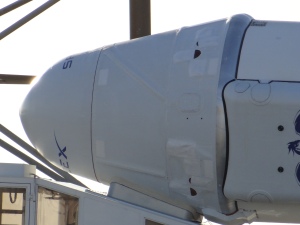ISS Science Taking Off
Less than a day before liftoff of the next SpaceX Dragon headed for the International Space Station, NASA held a science briefing at Kennedy Space Center to highlight the work related to this mission. Officially there will be 330 kg going up and 500 coming down, which doesn’t necessarily sound like much, but with the increasing use of small unitized experiment platforms, such as that offered by NanoRacks, the total capacity is noteworthy. For example a protein crystal growth experiment flown by the company carries 25 separate proteins, each of which will be exposed to 400 different samples, resulting in 9,600 separate tests.
Another experiment, performed by the University of Wisconsin, is designed to study how plants signal low oxygen conditions, a circumstance easily arrived at in microgravity, where the normal movement of gases is altered, making it possible for plants to essentially asphyxiate themselves by exchanging gases trapped in their immediate vicinity. So what is the relevance to anyone besides orbital farmers, whose population is no more than six in the most optimistic assessments?
Plants on Earth are routinely subjected to low oxygen conditions, from flooding to being encased in ice. Understanding the stress signalling process is an important step in designing genetically engineered plants which are better suited to endure sub-optimal optimal conditions on Earth. So, maybe, a few years in the future when you buy that cute little tomato plant in early March, swearing to yourself that if it freezes again you’ll cover it up, when the temp drops and it’s just too cold to fool with, NASA’s got your back.
If there is one clear message coming out of the station program at the moment, it is that both the volume and the velocity of the science being performed aboard the station is building. NASA routinely tracks the actual hours spent on science, and recently hit an all time high of 71 hours in a week on the U.S. side alone, (Approx 35 on the Russian side) and average is headed steadily up.
On CRS-2, the amount coming back down is greater than that which is going up, which is perhaps a metaphor for the ISS program as a whole. If that is the case, then the SpaceX Dragon is literally the indispensable link in the entire enterprise, a remarkable accomplishment for a system which is still less than a year old.


